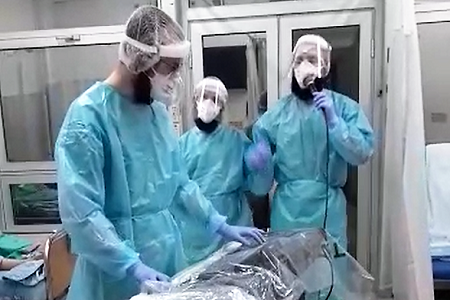
In ancient and modern Israel, the Jewish holiday of Sukkot has been a time for rejoicing with music and dance. This year, the COVID-19 pandemic has necessitated the canceling of these traditional gatherings. But inside the Hadassah Medical Organization’s COVID-19 outbreak units, volunteers brought the spirit of the joyous holiday to the patients, filling the unit with the sound of music. It is the only such outreach in the world. Only at Hadassah have patients who have recovered from COVID-19 volunteered to visit patients in the COVID-19 units to provide some human warmth to those isolated there.
The Sukkot celebrations, replete with entertaining and entertainment, dating back to the ancient Simchat Beit Hashoavah (Rejoicing at the Place of the Water Drawing) festival. As explained in myjewishlearning.com’s excerpt from Celebrate! The Complete Jewish Holiday Handbook, the water ceremony was thought to be a folk rite, aimed at bringing rain. It was later transformed by the rabbis into a symbolic Temple ritual, where each morning of Sukkot, the priests filled a golden flask at the pool of Siloah near Jerusalem. Shofar blasts then greeted their arrival at the Temple’s Water Gate. The priests then ascended to the altar and poured the water over the altar simultaneously with wine from another bowl. An orchestra of flutes, trumpets, harps, and cymbals accompanied torchlight processions as men of purity “danced ecstatically to the hand-clapping, foot-stomping, and hymn-singing of the crowds.”
The Talmud, the central text of Rabbinic Judaism, notes, “One who had never witnessed the Rejoicing at the Place of the Water Drawing had never seen true joy in his life.”
